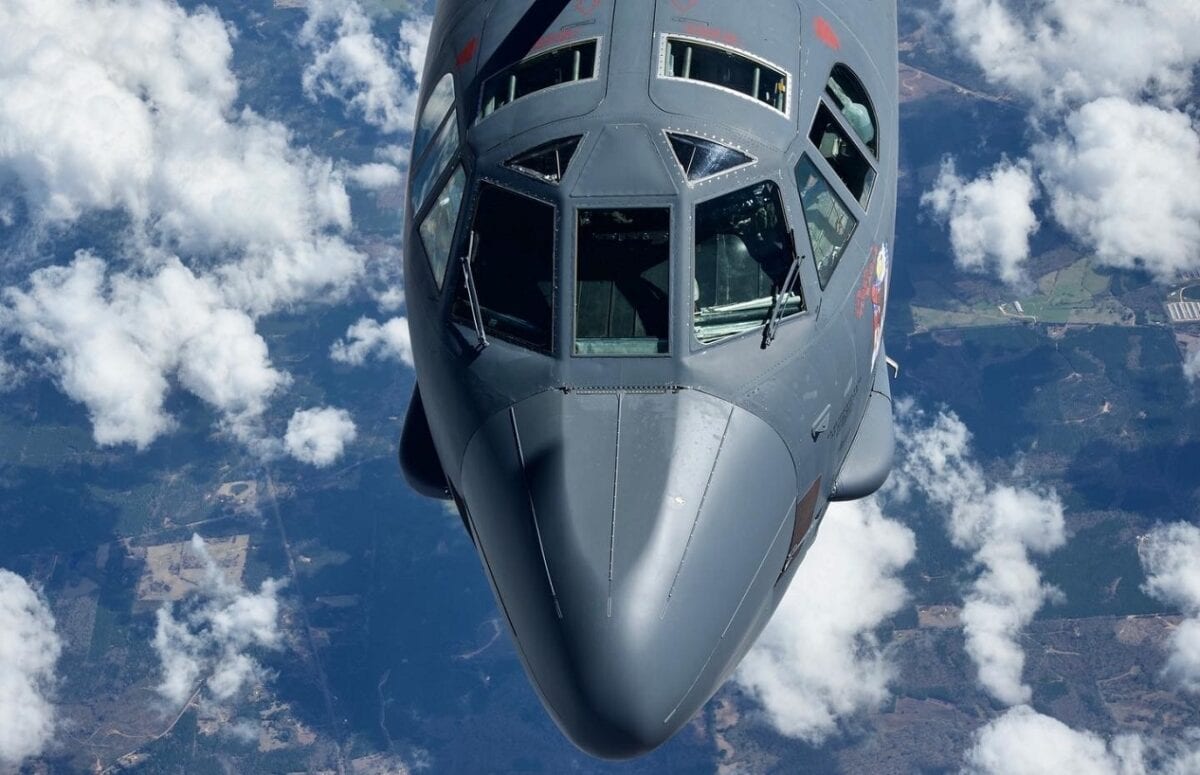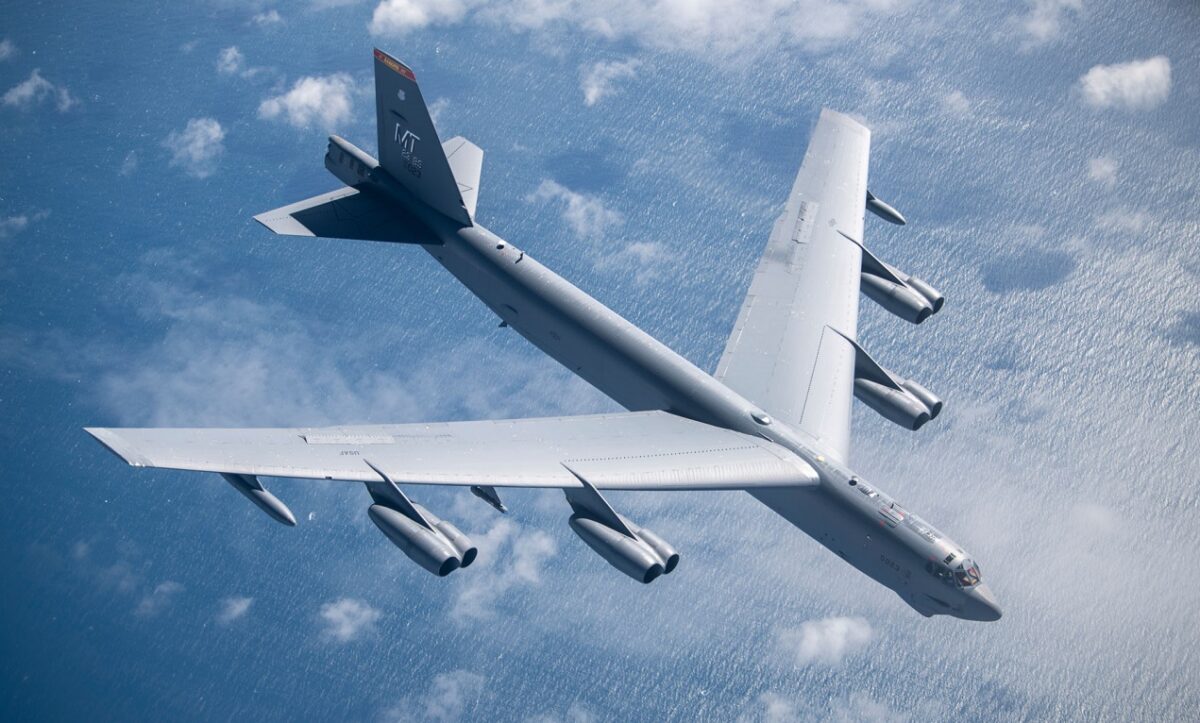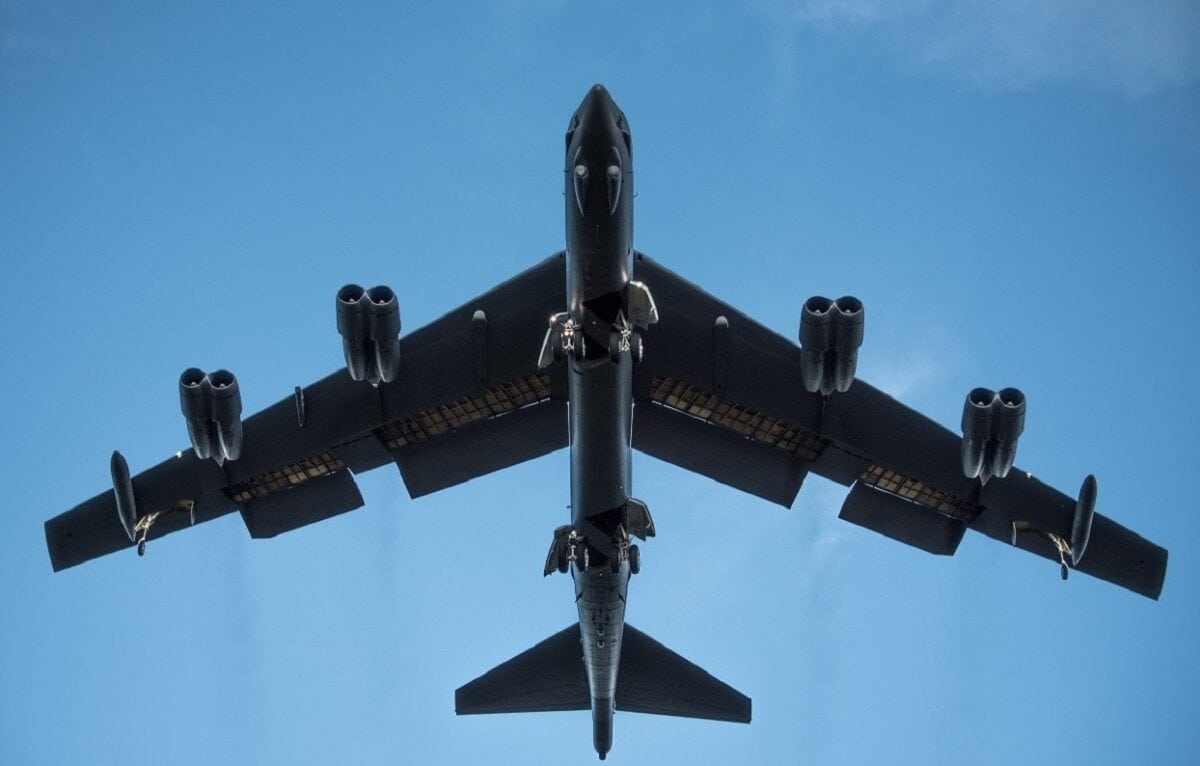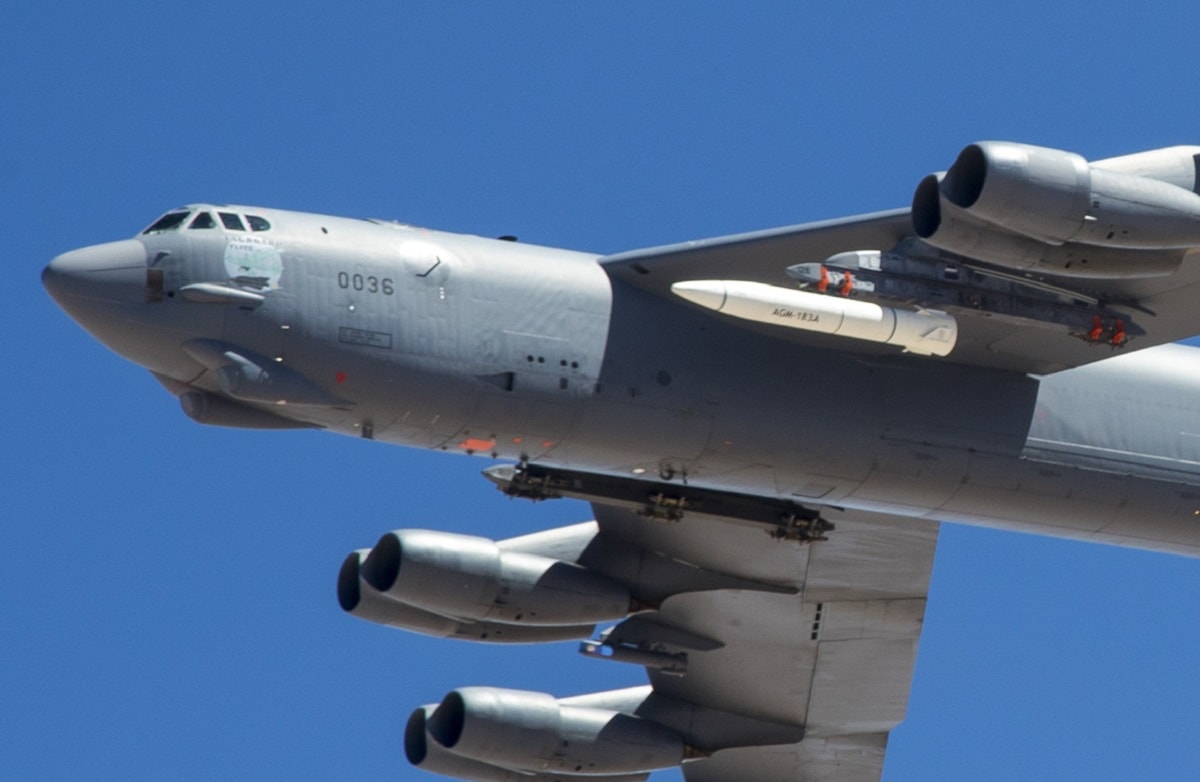When will the B-52 Bomber finally retire? The B-52H Stratofortress could keep flying for a number of years due to its strong airframe and ability to be repeatedly upgraded. But can it fly into the coming decades without being retired? The Air Force is investing in new engines that show the service branch is serious about the future of the B-52. The B-52 is also expected to carry a hypersonic weapon later this year, which the Air Force has tested successfully.
B-52 Ongoing Engine Replacement
Progress on the new engines is ongoing. It’s an amazing long-range project because the latest propulsion systems may not completely replace the current engines until 2038. This shows the Air Force assumes the B-52 will live on for more than 16-years. There are currently 76-bombers in the fleet that will need the engine upgrade.
Rolls Royce got the contract last fall, and the Air Force is speeding ahead to outfit all the airplanes with new power plants. It’s difficult to believe the Pratt & Whitney TF33 engines have made it this far having been installed in the 1960s, and Boeing is enthusiastic about the upgrade.
Robert Gass, a strategic planner at Boeing, explained the switch at the Air Force Association’s annual conference in March.
“Pratt & Whitney made a great engine that has served the B-52 very well, but it is approaching the end of its life and we have to act now in order to keep the B-52 viable,” he said.
Rolls Royce will work on the $2.6 billion contract to install eight F130 engines on each airplane. This will extend the range and add more endurance, Gass added.
The Rolls Royse Engine Has Enviable Characteristics
The F130 engine will be built in Indianapolis, Indiana. Rolls Royce believes the new engines will last the rest of the B-52’s life cycle. The F130 will require fewer maintenance hours and less fuel than the Pratt & Whitney, resulting in reducing the need for aerial re-fuelings.
The strategic nuclear-capable bomber has the ability to carry 70,000 pounds of precision-guided bombs and missiles. This includes cruise missiles and hypersonic weapons. An upgrade of the Internal Weapons Bay Upgrade enables “JDAMS, Joint Air-to-Surface Standoff Missiles (JASSM) and a weapon called Miniature Air Launched Decoy, or MALD-J jammer,” according to Kris Osborn of Warrior Maven.

A U.S. Air Force KC-135 Stratotanker with the 927th Air Refueling Wing, Florida refuels a B-52 Stratofortress with the Barksdale Air Force Base, Louisiana, on February 26, 2021. On this mission there were two Stratotankers that refueled three Stratofortresses. (U.S. Air Force photo by Tiffany A. Emery)

B-52 Bomber. Image Credit: US Air Force.

Image: Creative Commons.
The B-52 can fly for 8,800-miles at 650-miles per hour at an altitude of 50,000 feet.
B-52 Ready to Fire Hypersonic Weapons
Another feature of the B-52 that shows the Air Force wants to keep it around for years is the capability to deploy the Air Launched Rapid Response Weapon (ARRW) hypersonic missile. This gives the B-52 a multi-mission role because an upgraded communication system called CONECT allows the B-52 to collect real-time intelligence data for better situational awareness. It also allows the crew to re-target a missile in flight. So, the B-52 could deliver its ordnance and stay in the air to be an airborne command and control airplane.
Yes, It Will Last Another Ten to Fifteen Years At Least
With these upgrades, the B-52 will stay relevant at least for another ten to fifteen years – meaning the aircraft could reach 80 or 90-years-old someday. The Air Force and Boeing can take pride in this longevity. It’s likely that the B-52 will transition to the over the horizon stand-off missile launching role in addition to its capability to hold up a key leg of the nuclear triad.
Now serving as 1945’s Defense and National Security Editor, Brent M. Eastwood, PhD, is the author of Humans, Machines, and Data: Future Trends in Warfare. He is an Emerging Threats expert and former U.S. Army Infantry officer. You can follow him on Twitter @BMEastwood.

